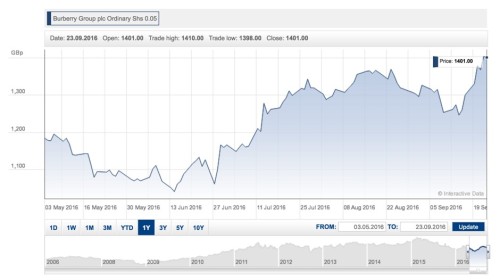Sector Insights: A deep dive into the fashion industry
- Go back to blog home
- Latest
London Fashion Week ended at a high in mid-September, unveiling floral prints and Victorian ruffles.
But what challenges does the fashion industry face in terms of sector financing and growth in a post-Brexit world? We spoke to Trade Finance Global to do a deep dive into the fashion industry and how it affects exporters.
Eye On: The Finance of Fashion
The fashion industry was worth some $36bn US dollars in 2014, up 8% from the previous year, according to the BFC. The fashion business cycle is one of the most complex, highly seasonal and requiring planning one season in advance.
Fashion is a bit like finance, picking the right outfit requires sourcing the different pieces, the headgear, outfit, shoes and jewellery. Running a fashion business also involves bringing together lots of moving counterparts: sales and marketing, finance and cashflow management, logistics and transport. But if you get it right, it can reap rewards.
Considerations for Financing a Fashion Business
For UK exporters of fashion goods, we’ve put together some top tips and considerations for exporters, as well as highlighting ways fashion companies, being such seasonal businesses, maintain working capital throughout the year.
1. Supply Chain Finance or Stock Finance Facilities can help bridge the finance gap
Supply Chain Finance (SCF), also known as reverse factoring, is a cash flow management solution which allows suppliers faster payment from larger buyers. Fashion businesses can use purchase orders to allow a financing house to fund the production of stock (e.g. clothing or textiles) and once they send invoices to their buyers, invoices can be sold, or factored by the same finance house.
“Many producers of fashion textiles or clothing use Supply Chain Finance to help free up working capital and make the strengthen their balance sheet,” says James Sinclair at Trade Finance Global.
“Alternatively, a trade finance facility can be used when importing goods such as raw textiles from abroad from the same supplier. A Letter of Credit is an instrument that can be used to advance payment to the supplier, allowing for them to be able to pay the buyer up front, negotiate better terms, get larger orders and also grow a stronger relationship with a buyer.”
2. Exporting is on the rise post-Brexit, and probably the best time to export
Following a tumultuous EU referendum, where Britain voted leave on the 23rd of June, the pound dropped to a 31 year low against the US dollar, and an 8 year low against the euro. But a weak pound has given opportunities to UK exporters.
FTSE 100 company Burberry has seen share prices soar since June, particularly after London Fashion Week, when it revealed new collections. As the pound has weakened, UK inbound tourism has peaked, encouraging spending at fashion outlets including Burberry., The pound weakening is generally seen as good news for exporters, particularly in the fashion industry, although a word of caution; the costs to import goods and raw materials may have risen relatively, potentially squeezing profit margins.
3. Think about currency options when you’re planning for next season
In the global world of fashion business, buyers will want to purchase goods or pay for items in different currencies. When trading on lengthened payment terms (e.g. 30-90 days), it makes sense to protect currency volatility and have a secure balance sheet.
As we’ve seen over the last few months, currency pairs, particularly GBP/USD and GBP/EUR have seen huge swings. It’s important that any fashion businesses with large exposure to foreign currency consider foreign exchange contracts, which could in fact minimise risk from market volatility and give an element of certainty when it comes to costs and future cash flow.
As with all businesses, planning, and understanding the detail is key. Understanding how financing the business, knowing the margins, and stock-to-sales ratios when purchasing, can help stand you for success in tough trading environments. With the added complexity of fashion buying cycles, it’s an exciting time to be in the sector!



